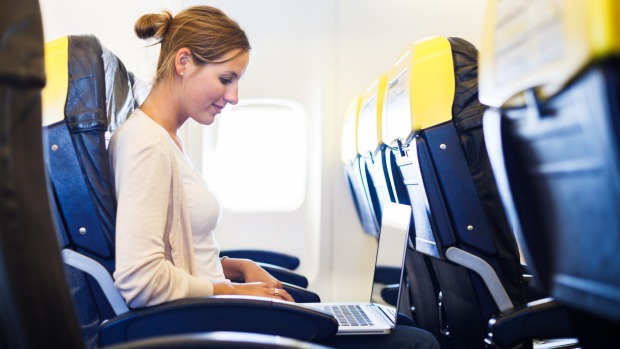 Wi-Fi is everywhere, from restaurants to hotels, from cafés to shopping malls… but Wi-Fi has not reached its fullest potential.
Wi-Fi is everywhere, from restaurants to hotels, from cafés to shopping malls… but Wi-Fi has not reached its fullest potential.
In-flight Wi-Fi is still at its beginnings, with only a few airlines offering in-flight free Wi-Fi and some offer paid Wi-Fi.
Frequent flyers, business flyers, and tech-savvy travelers form a WiFi-sensitive market segment that airlines want to conquer. Let’s see how airlines tested in-flight Wi-Fi and which were their results.
In the US, where the majority of flights operate only 30,000 feet above land, offering in-flight WiFi is quite easy: planes access the ground-based internet communication, the same networks that mobile phones use. United Airlines, Delta, and Virgin America are between the ones that offer on-board Wi-Fi. There’s also a wireless company, named Gogo, that sells a recurring subscription to access in-flight internet to business travelers. Gogo has an average of 70 users per flight on any US coast-to-coast service.
Some European and Asian airlines started offering paid in-flight Wi-Fi, starting from US1$ for 600 MB (on Emirates flights). Emirates reports having a daily average of 3500 global connections across its flight last October.
Owing to the cost of satellite connections, airlines often require the purchase of data packages at unreasonable prices. But other airlines, such as Norwegian Airlines, launched free high-speed broadband on flights. Other companies that offer free Wi-Fi are Turkish Airlines and Air China.
Similar tests in New Zealand and Australia were a flop: Air New Zealand gave in-flight WiFi on a domestic flight at $20 per megabyte. The WiFi service was too expensive and it was removed (and never reactivated). Qantas conducted trials in 2012, charging $14 to $43 (depending on the amount of data), but less than 5% of the flyers used the service.
Visit www.tanaza.com
